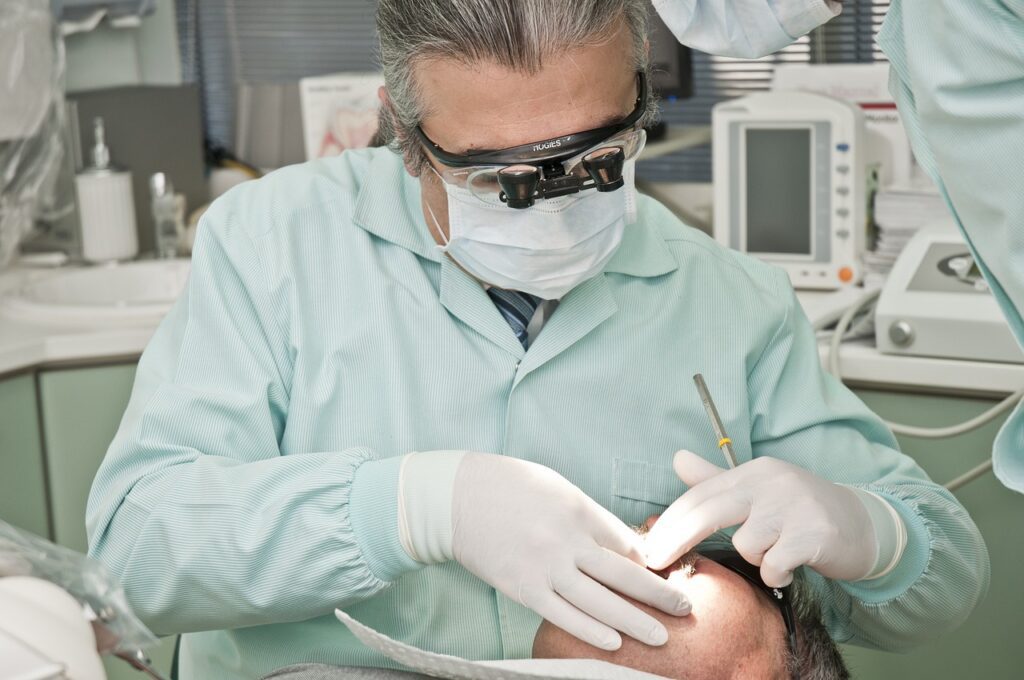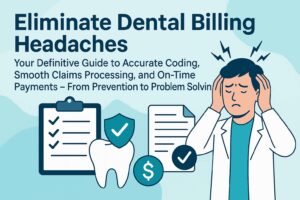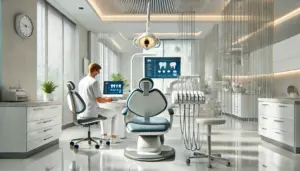
Why Dental Credentialing Automation is Crucial for New Dentists

This article will navigate through the current state of dental credentialing, elucidating how automated systems, such as CAQH ProView, streamline and fortify this foundational process. Automation, with its promise of time savings and cost reduction, has revolutionized dental practices by simplifying dental coding, enhancing the accuracy of insurance claims, and ensuring seamless revenue cycle management. By delving into how these automated systems function and their profound impact on dental practices, alongside practical case studies, the article sheds light on why dental credentialing automation emerges as an essential strategic investment for new dentists, rooting for an efficient, responsive, and patient-centric practice framework.
Current State of Dental Credentialing
Traditional Methods and Challenges
The current landscape of dental credentialing is marked by a reliance on outdated, paper-based methods which often result in inefficiencies and increased administrative costs. Many dental practices continue to face the cumbersome task of managing paper submissions for each insurance plan, which not only slows down the process but also increases the likelihood of errors. The necessity for dentists to re-credential every three years, coupled with frequent requests for updated professional information, adds to the administrative burden and costs. This traditional approach has direct financial implications, as practices using multiple credentialing methods may spend significantly more on administrative tasks compared to those utilizing a unified platform.
Technological Advancements in Credentialing
In contrast, technological advancements are setting a new standard in the dental credentialing process. The adoption of automated systems like CAQH ProView® offers a centralized platform that significantly reduces the time and cost associated with credentialing. These systems facilitate the sharing of a dentist’s professional and practice information across all participating plans, streamlining the process and enhancing data accuracy. The move towards automation is further evidenced by the increasing volume of electronic transactions in the dental industry, which saw a 15% increase in 2019 alone, indicating a shift away from manual processes. This trend towards digital solutions not only simplifies the credentialing process but also improves the overall efficiency and cost-effectiveness of dental practices, promising a future where technological integration becomes the norm in dental credentialing.
How Automated Systems Work
Electronic Data Entry
Automated systems significantly enhance the dental credentialing process by initiating with secure electronic data entry. Applicants input their information through a user-friendly portal, which mitigates the risk of manual entry errors. This streamlined approach not only ensures accuracy but also accelerates the entire credentialing timeline, allowing dental professionals to focus more on patient care rather than administrative tasks.
Integration with Verification Sources
Following data entry, automated systems integrate with various verification sources to confirm critical details such as licenses, malpractice insurance, and educational credentials. This integration reduces the need for manual verification tasks, thereby enhancing the efficiency of the credentialing process. One Dental Billing, leveraging such technologies, ensures that all necessary compliance standards are met without the delays typically associated with traditional methods.
Real-time Tracking
Real-time dashboards are a pivotal feature of automated systems, providing applicants and practice staff with up-to-the-minute visibility into the credentialing status. This feature allows for immediate identification of any missing information or potential delays, ensuring a continuous flow in the credentialing process. By integrating with practice management software, these systems eliminate duplicate data entry and maintain consistency across the practice’s operational framework.
Impact of Automation on Dental Practices
Operational Efficiency
Automation significantly enhances the operational efficiency of dental practices. By automating credentialing processes, it eliminates repetitive, tedious tasks, allowing staff to focus on more critical aspects of patient care and practice management. For instance, One Dental Billing provides a digital dashboard where the status of dentists’ credentialing can be monitored in real-time, ensuring that all processes are streamlined and any issues are quickly addressed.
Cost-effectiveness
Automating dental credentialing not only streamlines the process but also results in substantial cost savings. By reducing the need for manual administrative tasks and minimizing errors, practices can save on labor and administrative expenses. Furthermore, automated systems prevent costly compliance violations by maintaining up-to-date and accurate records of staff credentials, ensuring all services remain consistent and compliant.
Data Security and Compliance
Data security is paramount in automated credentialing systems. Strong encryption and user access controls protect sensitive applicant information, while regular security audits ensure the system’s integrity. This high level of data security helps dental practices build trust with applicants and comply with stringent regulations, ultimately enhancing the overall quality and reliability of dental services.
Case Studies of Automated Dental Credentialing
Successful Implementation Examples
Automated dental credentialing has transformed operational efficiency for many dental practices. One notable case is XYZ Dental Clinic, which partnered with ABC Credentialing Solutions to manage their complex credentialing process. This partnership significantly reduced the administrative burden, streamlined credentialing applications, and ensured compliance with insurance standards, leading to enhanced reimbursement rates and overall practice productivity.
Another example is DCS Credentialing, which offers a comprehensive automated solution that covers everything from data collection to integration and analytics. Their services have been crucial in reducing the credentialing process time from months to just days, providing dentists with real-time updates on their credentialing status through an accessible digital dashboard.
Lessons Learned
The transition to automated systems teaches valuable lessons about efficiency and compliance in the dental industry. First, automating the credentialing process eliminates repetitive tasks and reduces the risk of errors, which are common in manual processes. Secondly, the use of technology ensures that dental practices meet the rigorous standards set by the National Committee for Quality Assurance, thereby maintaining high levels of data security and compliance.
Furthermore, the case studies underscore the importance of choosing the right service provider. The success of XYZ Dental Clinic highlights the need for thorough research and selection based on experience and reputation, ensuring that the credentialing process is handled by experts who are familiar with the intricacies of dental regulations and insurance policies.
By integrating automated credentialing services, dental practices like One Dental Billing can focus more on patient care and less on administrative tasks, ultimately leading to better patient outcomes and practice growth.
Conclusion
Through the exploration of dental credentialing automation, particularly the advancements and efficiencies it brings to new dentists and their practices, it becomes clear that embracing such technologies is not a luxury but a necessity. Automation, exemplified by solutions like CAQH ProView, not only streamlines the credentialing process but also significantly enhances operational efficiency and data accuracy. These improvements culminate in better patient care, reduced administrative burdens, and more effective management of the revenue cycle. Among the companies making a substantial impact in this field, One Dental Billing stands out for its adept integration of automated systems that support dental practices in navigating the complexities of credentialing with ease, thereby exemplifying the practical benefits of technology in dental practice management.
Reflecting on the broader implications, the shift towards automation in dental credentialing signals a transformative period in healthcare management, one where accuracy, efficiency, and security are no longer aspirational goals but achievable realities. The significance of these developments extends beyond individual practices, promising to elevate the standard of dental care available to communities. As dental practices, including those allied with One Dental Billing, continue to adopt and refine automated credentialing solutions, the future of dental healthcare looks promisingly streamlined, secure, and focused on delivering the best patient outcomes. This move not only assures compliance and enhances practice profitability but also sets a precedence for the integration of technology in optimizing healthcare administration and patient care.
FAQs
What are the limitations of AI in replacing dentists? AI and robots lack the ability to communicate effectively, which is a crucial part of a dentist’s role. Dentists need to interact with patients to ensure they have a positive experience and understand their treatment plans properly. While robots can issue instructions, they cannot guarantee patient comprehension or provide the human touch that is often necessary.
How has technology revolutionized dentistry? Technology, particularly computer-aided design (CAD) and computer-aided manufacturing (CAM), has dramatically transformed the production of dental restorations. These advancements allow dentists to often produce veneers, crowns, and bridges in-house during a single visit, enhancing efficiency and patient convenience.
What is the meaning of credentialing in the context of dentistry? Credentialing in dentistry involves verifying whether an applicant possesses the necessary qualifications to provide dental services at a facility. It also includes defining the scope of practice for the dentist through what is known as dental privileges.
Is the field of dentistry susceptible to being automated? Based on current assessments and visitor feedback, the field of dentistry faces a very low risk of automation. The calculated automation risk level suggests a 0.0% chance of this profession being automated, indicating that dentists are likely to remain essential in their roles due to the specialized and interpersonal nature of their work.
Contact Us
Phone: 908-357-1515
111 Town Square Pl, Suite 1203 Jersey City, NJ 07310












